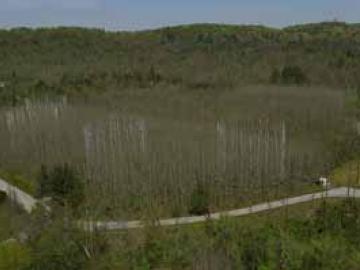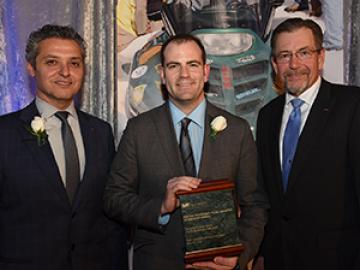
Filter News
Area of Research
- Advanced Manufacturing (10)
- Biological Systems (5)
- Biology and Environment (21)
- Biology and Soft Matter (1)
- Building Technologies (4)
- Chemical and Engineering Materials (2)
- Chemistry and Physics at Interfaces (6)
- Clean Energy (159)
- Climate and Environmental Systems (4)
- Computational Biology (1)
- Computational Chemistry (1)
- Computer Science (2)
- Energy Frontier Research Centers (8)
- Energy Sciences (1)
- Fossil Energy (1)
- Fuel Cycle Science and Technology (1)
- Functional Materials for Energy (6)
- Fusion and Fission (6)
- Fusion Energy (7)
- Geographic Information Science and Technology (2)
- Isotope Development and Production (1)
- Isotopes (5)
- Materials (143)
- Materials for Computing (5)
- Materials Synthesis from Atoms to Systems (5)
- Materials Under Extremes (6)
- National Security (16)
- Neutron Data Analysis and Visualization (2)
- Neutron Science (64)
- Nuclear Science and Technology (42)
- Nuclear Systems Modeling, Simulation and Validation (3)
- Quantum Condensed Matter (2)
- Quantum information Science (3)
- Reactor Technology (1)
- Sensors and Controls (2)
- Supercomputing (81)
- Transportation Systems (2)
News Type
Date
News Topics
- 3-D Printing/Advanced Manufacturing (47)
- Advanced Reactors (18)
- Artificial Intelligence (31)
- Big Data (22)
- Bioenergy (25)
- Biology (18)
- Biomedical (30)
- Biotechnology (7)
- Buildings (14)
- Chemical Sciences (19)
- Clean Water (6)
- Climate Change (31)
- Composites (8)
- Computer Science (73)
- Coronavirus (23)
- Critical Materials (8)
- Cybersecurity (7)
- Decarbonization (22)
- Education (1)
- Emergency (1)
- Energy Storage (32)
- Environment (51)
- Exascale Computing (8)
- Fossil Energy (3)
- Frontier (7)
- Fusion (24)
- Grid (17)
- High-Performance Computing (17)
- Isotopes (25)
- ITER (1)
- Machine Learning (17)
- Materials (16)
- Materials Science (64)
- Mathematics (6)
- Mercury (2)
- Microelectronics (1)
- Microscopy (15)
- Molten Salt (6)
- Nanotechnology (28)
- National Security (18)
- Net Zero (6)
- Neutron Science (48)
- Nuclear Energy (54)
- Partnerships (12)
- Physics (26)
- Polymers (17)
- Quantum Computing (10)
- Quantum Science (29)
- Security (12)
- Simulation (13)
- Space Exploration (9)
- Statistics (2)
- Summit (23)
- Sustainable Energy (41)
- Transformational Challenge Reactor (5)
- Transportation (34)
Media Contacts

Mariappan (Parans) Paranthaman, a researcher at the Department of Energy’s Oak Ridge National Laboratory, has been named a fellow of the American Ceramic Society (ACerS).






Four researchers at the Department of Energy's Oak Ridge National Laboratory are among 44 scientists selected by DOE's Office of Science to receive funding under the department's Early Career Research Program.

Run-2 for the Large Hadron Collider (LHC)—the world’s largest and most powerful particle collider—began April 5 at CERN, the European Laboratory for Nuclear Research. In preparation, Thomas M. Cormier, who leads the LHC Heavy Ion group at Oak Ridge National Laboratory, led an upgrade of the electromagnetic calorimeter used for LHC’s experiment called ALICE (for A Large Ion Collider Experiment).




